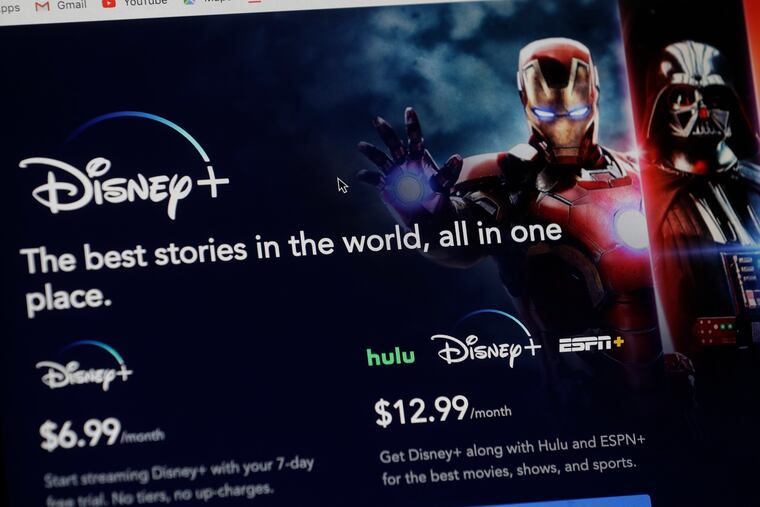High-tech streaming goes old-school to advertise
Streaming services are the hottest thing in entertainment these days. But when it comes to getting the word out about the newest offerings, it's traditional media that often benefits.

Streaming services are the hottest thing in entertainment these days. But when it comes to getting the word out about the newest offerings, it's traditional media that often benefits.
Apple, Walt Disney and other big tech and media giants are increasingly turning to outlets like TV, billboards and newspapers to promote their new online products.
Spending on broadcast and cable ads by streaming services jumped 19% to $209 million over the past 10 weeks, according to data from researcher ISpot.TV. The biggest spender was Apple, which launched its Apple TV+ service on Nov. 1. It accounted for almost one-quarter of the spending, followed closely behind by Amazon.com, with $37 million in TV ad purchases.
"Television is the easiest place to find people who like TV," said Brian Wieser, global president of business intelligence for GroupM, the ad buying unit of WPP.
Disney, which introduced its new Disney+ streaming service on Tuesday, relied heavily on its own networks for marketing. Ads ran on ESPN's Monday Night Football, while ABC aired the first episode of the service's new "High School Musical" series the Friday before the launch. The company also promoted the service on its radio network and in the hotel rooms at its theme parks.
ESPN correspondents even drew flak for gushing about Disney+ rather than talking sports.
Ricky Strauss, the head of content and marketing for Disney+, called it the "biggest synergy campaign ever in the history of the Walt Disney Co."
Pluto TV, the streaming startup acquired by Viacom in March, blanketed billboards and buses in Los Angeles, Chicago and New York this year with ads for its service. Pluto is free for consumers and relies on advertising for revenue. The company said it wanted to reach ad buyers in those cities.
Even traditional ads can have high-tech flourishes. Billboard operator Outfront Media Inc. used cameras and augmented-reality equipment to make it rain squids at bus stops in New York last month to promote the new HBO series "Watchmen." The premium cable network will be the key part of a streaming service that parent AT&T is launching in May.
"The streaming services know they have to break through with consumers," said Bob McCuin, chief revenue officer for Clear Channel Outdoor Holdings Inc., another billboard operator that said its business had seen a "measurable" uptick in demand from online video services.
Normally this would be the season broadcast networks take out ads to promote their new fall shows, but lately streaming services seem to be snatching up key locations in spots such as New York's Times Square. That will likely continue as awards season heats up and online services look to promote films that could be Oscar winners.
A New York Times special section on holiday films last Sunday, for example, included six full-page ads for Netflix and Amazon movies. A Los Angeles Times version this week had seven such ads.
Netflix actually purchased billboards on the Sunset Strip in Los Angeles to tout its programming last year. But now that it's established, it's not advertising as aggressively as some streaming upstarts.
While overall marketing expenses at the streaming pioneer rose 20% in the first nine months of this year, to $3.5 billion, the company has been cutting back in the U.S.
Data from the research firm Kantar Media suggests Netflix's domestic budget was down about 38% in the first half of the year, as the company focuses its marketing on other countries, such as India.
"Netflix is a more of a mature brand," said Manish Bhatia, chief executive officer of Kantar's North America media division. "What we're seeing with Netflix and Hulu is they're pulling back a bit because they already have strong brand recognition."
Not every streaming company is all-in on traditional advertising. Dazn, the sports streaming service based in London, used no traditional media to promote a boxing match last Saturday between two YouTube personalities, Olajide Williams, aka KSI, and Logan Paul. The social-media stars promoted the fight heavily on their own channels and Dazn ran its own three-hour, pre-fight show for free online.
Joe Markowski, Dazn’s executive vice president for the service’s North America business, said 25 million watched for free online, leading to an uptick in paid subscriptions for the service. “This was a huge brand awareness play,” he said.